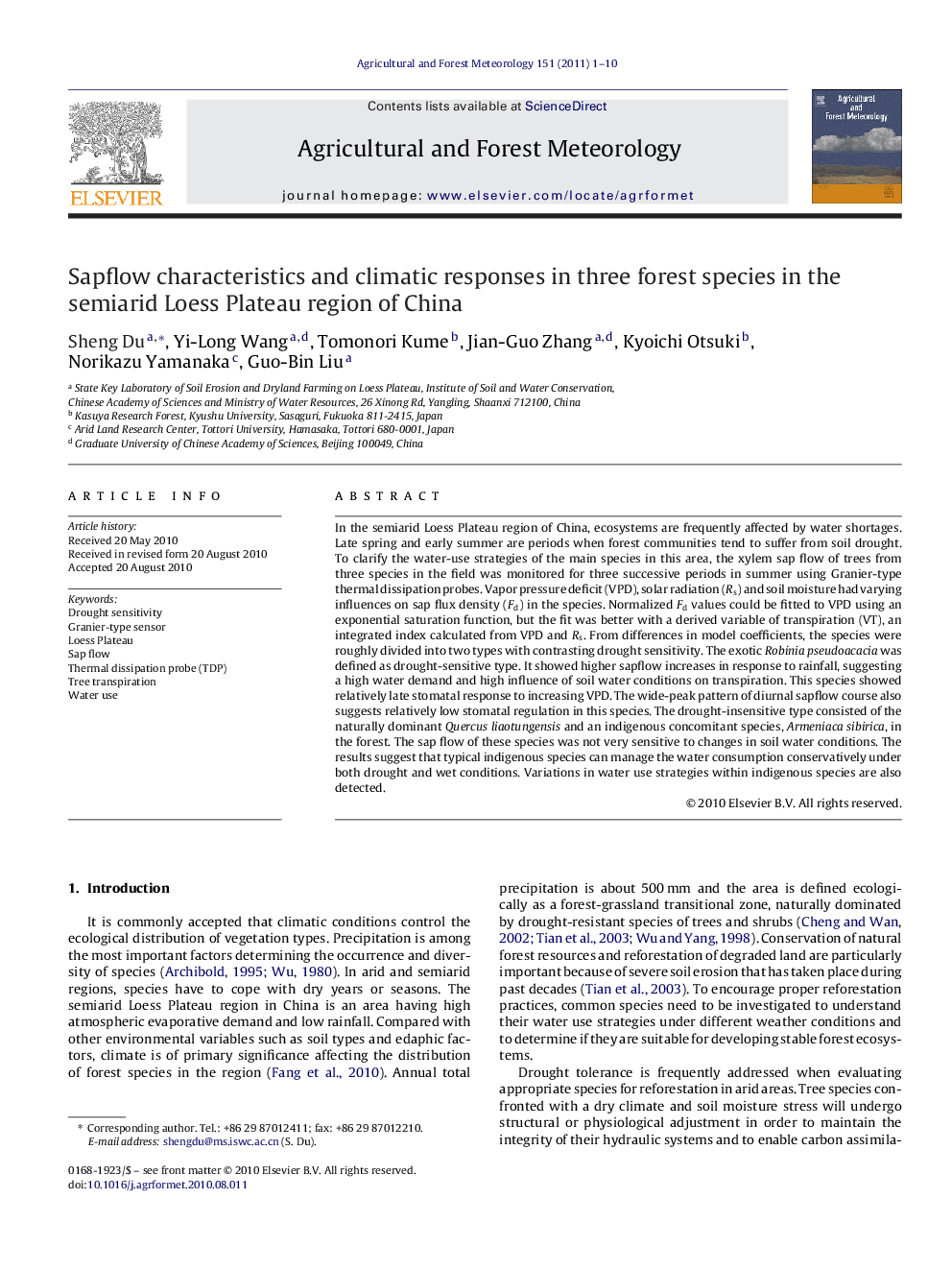| کد مقاله | کد نشریه | سال انتشار | مقاله انگلیسی | نسخه تمام متن |
|---|---|---|---|---|
| 82047 | 158369 | 2011 | 10 صفحه PDF | دانلود رایگان |

In the semiarid Loess Plateau region of China, ecosystems are frequently affected by water shortages. Late spring and early summer are periods when forest communities tend to suffer from soil drought. To clarify the water-use strategies of the main species in this area, the xylem sap flow of trees from three species in the field was monitored for three successive periods in summer using Granier-type thermal dissipation probes. Vapor pressure deficit (VPD), solar radiation (Rs) and soil moisture had varying influences on sap flux density (Fd) in the species. Normalized Fd values could be fitted to VPD using an exponential saturation function, but the fit was better with a derived variable of transpiration (VT), an integrated index calculated from VPD and Rs. From differences in model coefficients, the species were roughly divided into two types with contrasting drought sensitivity. The exotic Robinia pseudoacacia was defined as drought-sensitive type. It showed higher sapflow increases in response to rainfall, suggesting a high water demand and high influence of soil water conditions on transpiration. This species showed relatively late stomatal response to increasing VPD. The wide-peak pattern of diurnal sapflow course also suggests relatively low stomatal regulation in this species. The drought-insensitive type consisted of the naturally dominant Quercus liaotungensis and an indigenous concomitant species, Armeniaca sibirica, in the forest. The sap flow of these species was not very sensitive to changes in soil water conditions. The results suggest that typical indigenous species can manage the water consumption conservatively under both drought and wet conditions. Variations in water use strategies within indigenous species are also detected.
Research highlights▶ Sapflow characteristics reflect species drought sensitivity and water use strategy. ▶ Increase in sapflow after rainfall is higher in drought-sensitive exotic species. ▶ Indigenous species shows early-peak diurnal pattern with higher sensitivity to VPD. ▶ Indigenous species may use water more conservatively than fast-growing exotic species.
Journal: Agricultural and Forest Meteorology - Volume 151, Issue 1, 15 January 2011, Pages 1–10